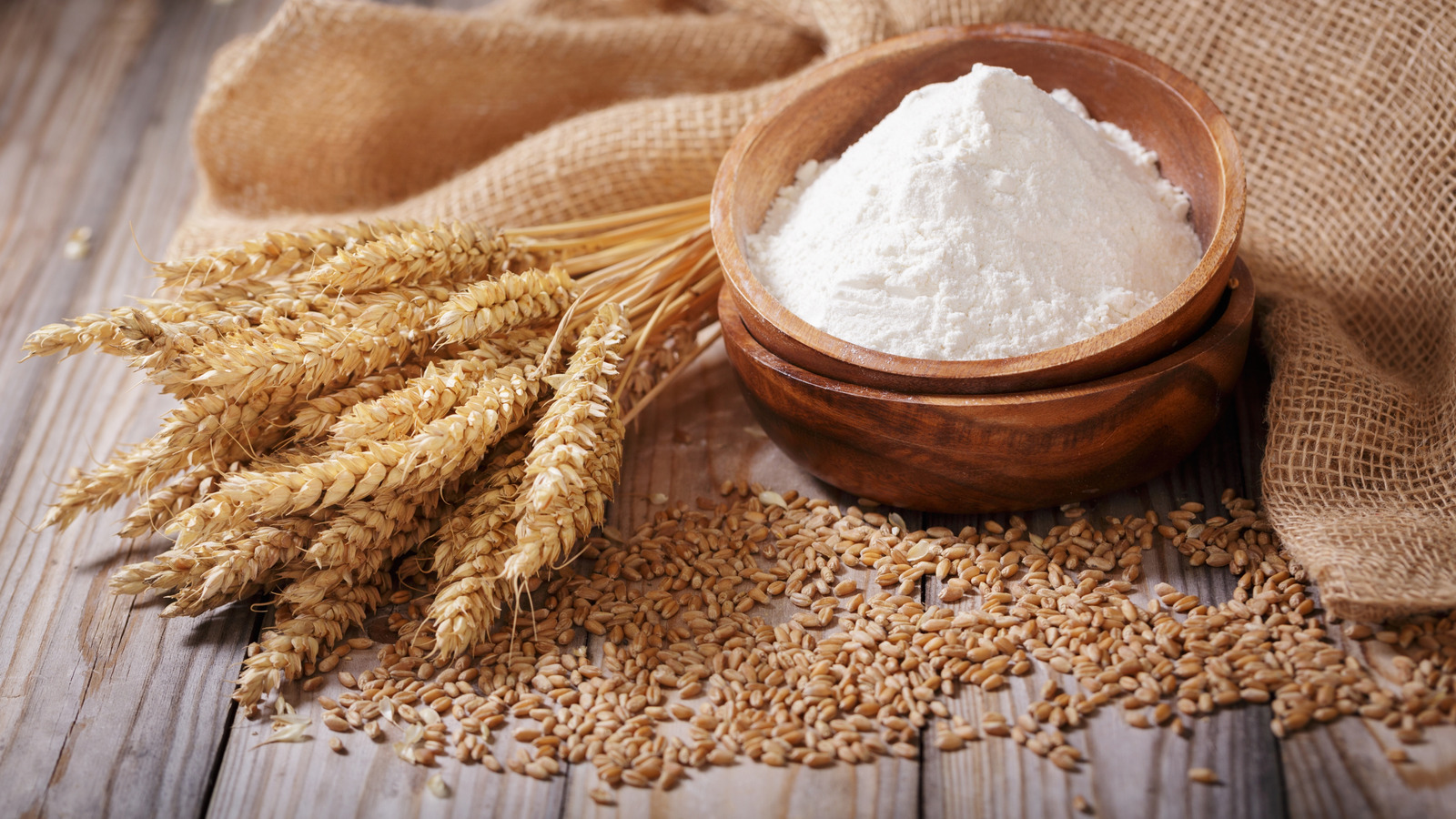Flour is an important ingredient in many traditional baked goods, from pasta to bread and even cookie dough. It’s what gives these doughs and batters their structure, and while we’ve been taught that the eggs in cookie dough are what make it dangerous to eat raw, the truth is that flour hides some dangers of its own — potentially harmful bacteria. In order to kill this bacteria, the flour has to be heat-treated, which you might have heard can be done in the microwave. The truth is that it’s complicated.
Flour grains grow in large fields, and they’re susceptible to being contaminated with bacteria such as salmonella or E. coli while growing, which can lead to serious illness if consumed. Since flour is raw and isn’t heat-treated during its refining process, those bacteria can transfer all the way from the grain to the package. Flour is usually baked to a safe temperature when that pasta or dough gets cooked, so it’s not often a concern. While some people swear by heat-treating their flour in the microwave, and yes, it will kill some of the bacteria, the FDA doesn’t recommend it as a viable, safe method.
Heat-treating flour in the microwave is done but not recommended
There are a number of recipes and tricks people use to heat-treat their flour. The most basic method involves adding the flour to a microwave-safe bowl and heating it in 30-second intervals until a food thermometer reads 165 degrees Fahrenheit. Then, once the flour is fully heated, it’s cooled completely before cooking with it.
The downside to this is that it doesn’t necessarily kill all of that harmful bacteria. Even though we know 165 degrees Fahrenheit as generally being a standard temperature for when bacteria die, it doesn’t necessarily work the same way for flour due to flour having such a low moisture content. “We still need more research data to confirm how hot you’d have to get the flour or how long you’d have to hold it at that temperature to make the flour safe to eat,” Purdue University food scientist Yaohua “Betty” Feng told the institution in an article.
Some flour alternatives like almond flour don’t need to be heat-treated because the almonds don’t pose the same bacterial risk. Oat flour doesn’t need to be heat-treated, either, so if you’re interested in preparing raw cookie dough (for cookie dough ice cream, for example), you can use either almond or oat flour and pasteurized eggs to ensure the dough is safe to eat.





